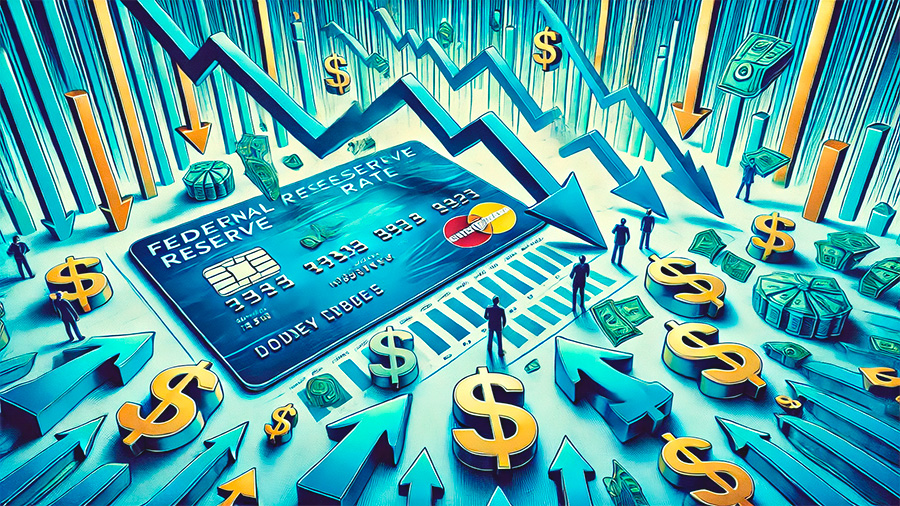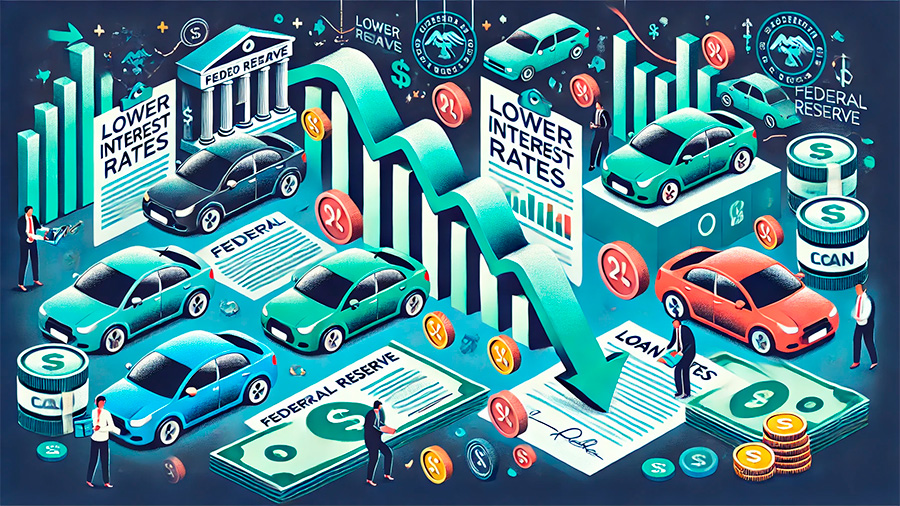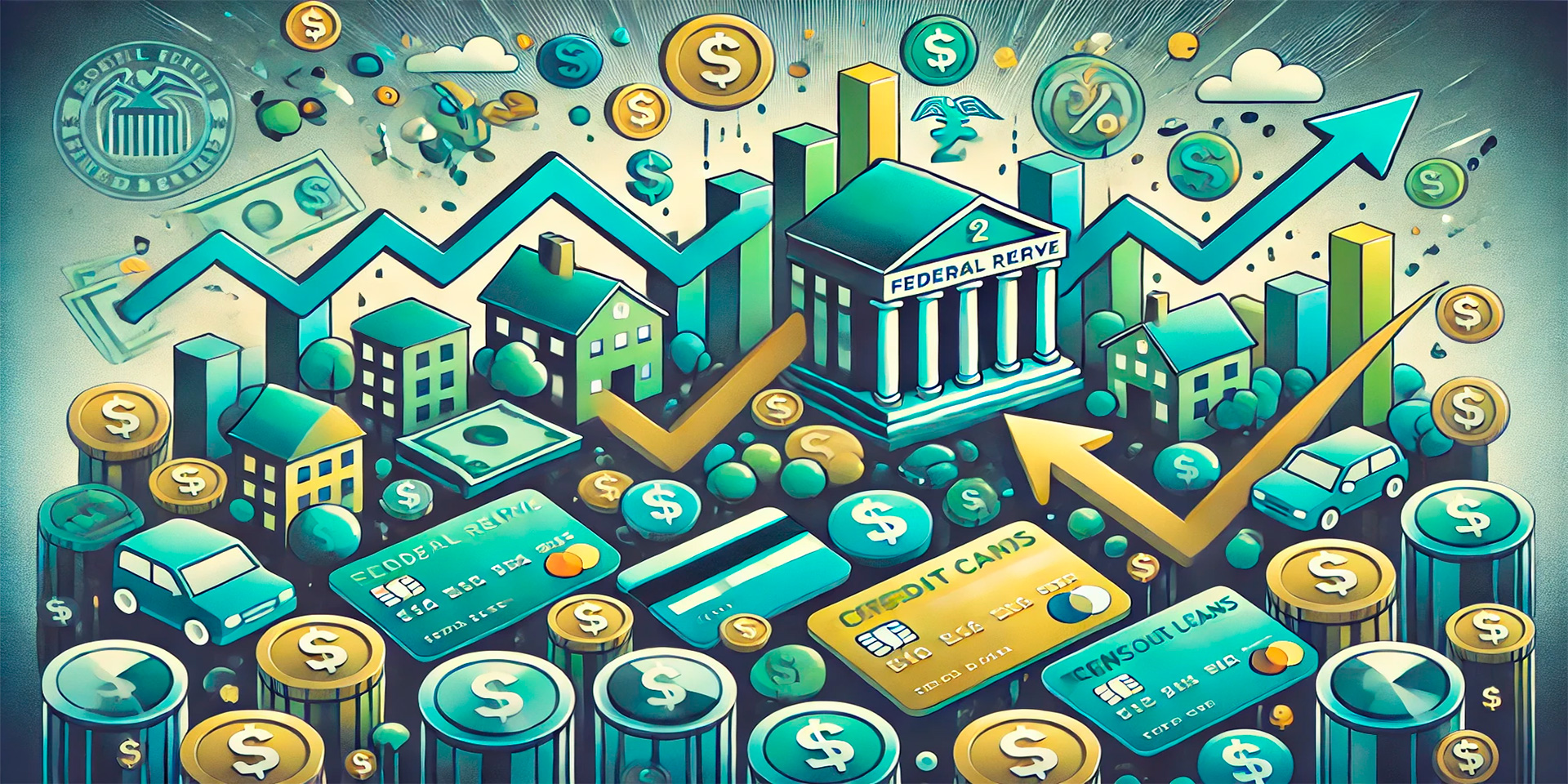The Federal Reserve (Fed) plays a crucial role in shaping the economy, and one of its primary tools is adjusting the federal funds rate. When the Fed cuts interest rates, it directly influences the cost of borrowing money for consumers. Lower Fed rates ripple through the economy, making loans such as mortgages, credit cards, and personal loans more affordable. By reducing the cost of borrowing, lower rates can provide significant financial benefits for consumers. Understanding how lower Fed rates affect different types of loans allows consumers to take advantage of favorable borrowing conditions and potentially save money.
Why the Fed Lowers Interest Rates
- Stimulating economic growth: The Fed lowers interest rates to encourage borrowing and spending, which can boost economic activity, especially during periods of slow growth or recession.
- Making credit cheaper: Lowering rates reduces the cost of borrowing for consumers and businesses, making it easier for individuals to take out loans for big-ticket items like homes, cars, or renovations.
- Reducing financial strain: When the Fed cuts rates, it can help alleviate financial pressure on borrowers by lowering monthly payments on existing loans tied to variable interest rates.
When the Fed cuts interest rates, it aims to stimulate the economy and provide relief to consumers by making borrowing more affordable.
How Lower Fed Rates Impact Mortgages
One of the most noticeable effects of lower Fed rates is on mortgage rates. When the Fed cuts rates, mortgage rates typically decline, which can result in significant savings for homeowners and prospective buyers. Whether you’re looking to buy a home or refinance an existing mortgage, lower interest rates can reduce the total cost of borrowing and make homeownership more affordable.
Benefits for Homebuyers
- Lower monthly payments: As interest rates decrease, the cost of monthly mortgage payments drops, making it easier to fit homeownership into your budget.
- Higher borrowing power: Lower rates mean you can afford to borrow more without significantly increasing your monthly payments, potentially allowing you to purchase a more expensive home.
- Long-term savings: Over the life of a 30-year mortgage, even a small reduction in interest rates can lead to significant savings in interest costs.
For homebuyers, lower Fed rates create an opportunity to lock in a lower mortgage rate, reducing the financial burden of homeownership over time.
Opportunities for Refinancing
- Reduced monthly payments: Refinancing at a lower rate can reduce your monthly mortgage payment, freeing up cash for other expenses or savings.
- Shorter loan terms: If you refinance to a lower rate, you may be able to switch to a shorter loan term (e.g., from a 30-year to a 15-year mortgage) without a significant increase in monthly payments, allowing you to pay off your home faster.
- Cash-out refinancing: With lower rates, you may also consider cash-out refinancing, where you take out a new mortgage for more than you owe, allowing you to access the equity in your home for other financial needs.
Refinancing during periods of low interest rates is a strategic way to reduce long-term costs and increase financial flexibility for homeowners.

How Lower Fed Rates Affect Credit Cards
Lower Fed rates also impact the cost of credit card debt. Many credit cards have variable interest rates, meaning the rate you pay is tied to the prime rate, which is influenced by the federal funds rate. When the Fed cuts rates, the interest rates on these variable-rate credit cards typically decrease, which can lower the cost of carrying a balance on your card.
Lower Interest Costs for Credit Card Holders
- Lower interest charges: With reduced interest rates, more of your monthly payments go toward paying off the principal rather than interest, helping you reduce your overall debt faster.
- Improved cash flow: As your interest costs decrease, you’ll have more available cash each month, which you can use to pay off additional debt or save for other financial goals.
- Easier debt repayment: Lower rates make it easier to manage and repay credit card debt, reducing the likelihood of falling deeper into high-interest debt.
Lower Fed rates create an opportunity for credit card holders to save money on interest and more effectively manage their outstanding balances.
Transferring Balances to Lower-Rate Cards
- Interest-free repayment periods: With a balance transfer card, you can often take advantage of an interest-free period (usually 6 to 18 months) to pay off your debt more quickly.
- Lower long-term interest: Even after the introductory period ends, you may benefit from a lower ongoing interest rate, making it easier to manage your credit card debt.
During periods of low interest rates, many credit card issuers offer promotional balance transfer deals that allow you to move your high-interest debt to a card with a lower rate, often at 0% interest for an introductory period. This can be a valuable tool for reducing your debt without paying excessive interest charges.
Personal Loans and the Impact of Lower Fed Rates
Personal loans are another area where consumers can benefit from lower Fed rates. Personal loans are often used for consolidating high-interest debt, making large purchases, or covering unexpected expenses. When the Fed cuts rates, personal loan interest rates typically decrease, making borrowing more affordable for consumers.
Lower Borrowing Costs for Personal Loans
- Lower monthly payments: Reduced interest rates translate into lower monthly payments, making it easier to manage debt and free up money for other financial goals.
- Debt consolidation: If you have high-interest debt, such as credit card balances, you can use a lower-interest personal loan to consolidate and pay off that debt, reducing your overall interest costs.
- More affordable large purchases: For consumers who need to finance large expenses, such as medical bills or home renovations, lower interest rates make personal loans more affordable, reducing the long-term cost of borrowing.
By taking advantage of lower Fed rates, consumers can secure personal loans with more favorable terms and lower costs, improving their financial health.

Car Loans and Lower Interest Rates
Car loans are also impacted by changes in the Fed’s interest rates. When the Fed cuts rates, auto loan rates typically decrease as well, making it cheaper for consumers to finance the purchase of a new or used vehicle. Lower auto loan rates can reduce your monthly payment, lower the total interest paid over the life of the loan, and improve your ability to afford a higher-priced vehicle.
Savings on Auto Loans
- Lower monthly car payments: Reduced interest rates on car loans can lead to smaller monthly payments, freeing up cash for other financial needs.
- Improved affordability: With lower rates, you may be able to afford a more expensive car without significantly increasing your monthly payment.
- Better loan terms: In a low-rate environment, consumers may have more options for favorable loan terms, including shorter loan durations with affordable payments.
For consumers looking to purchase a car, lower Fed rates can make car loans more affordable. This translates into lower monthly payments and overall savings on interest costs, making it easier to finance a vehicle without stretching your budget.
Maximizing the Benefits of Lower Fed Rates
While lower Fed rates create favorable borrowing conditions, consumers must approach these opportunities strategically to maximize their benefits. Taking advantage of lower interest rates can save money, but it’s important to carefully consider your financial situation and avoid overextending yourself.
Smart Borrowing Strategies
- Refinance high-interest loans: If you have existing loans with high interest rates, consider refinancing during periods of lower rates to reduce your monthly payments and overall interest costs.
- Avoid overborrowing: Lower rates make borrowing more affordable, but it’s important not to take on more debt than you can handle. Stick to a budget and ensure that you can comfortably manage your loan payments.
- Prioritize paying down debt: Use the savings from lower interest rates to accelerate debt repayment, reducing the amount you owe and improving your financial position over time.
By using lower Fed rates to your advantage, you can improve your financial health, reduce debt, and make smarter borrowing decisions.
Final Thoughts: Taking Advantage of Lower Fed Rates
When the Fed cuts interest rates, it creates an opportunity for consumers to save money on loans, from mortgages and credit cards to personal and auto loans. Lower rates can reduce monthly payments, lower the overall cost of borrowing, and provide financial relief for those managing debt. Whether you’re looking to buy a home, refinance existing debt, or take out a personal loan, understanding how Fed rate cuts affect different types of loans can help you make informed decisions and maximize your financial benefits.
By staying informed about rate changes and strategically leveraging lower interest rates, consumers can take control of their finances, save money on borrowing, and improve their long-term financial outlook.

